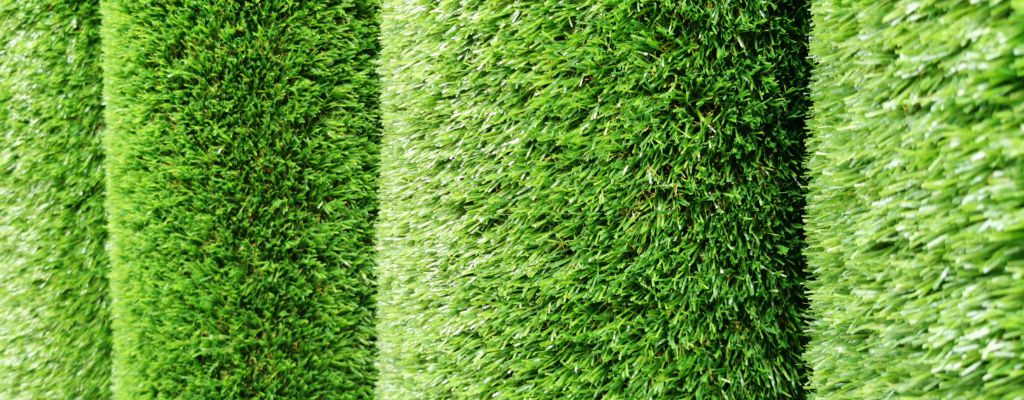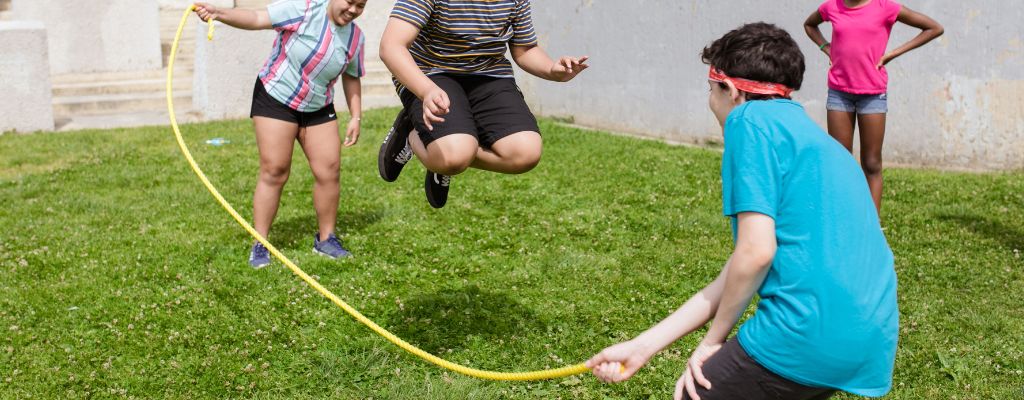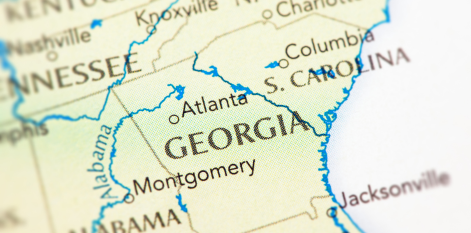Choosing between artificial grass and turf is not an easy decision. Whether it’s for a playground, a sports field, or even a backyard, choosing the right surfacing option can make or break your project.
With the rising popularity of both artificial grass and turf, understanding their differences and benefits can help make an informed decision.

The Argument For Artificial Grass
Artificial grass, often referred to as synthetic grass or fake grass, is a surface made from synthetic fibers that mimic the appearance of natural grass. It’s commonly used in areas where maintaining natural grass is challenging or not feasible.
Some of the benefits of artificial grass include but are not limited to:
Low maintenance
One of the primary advantages of artificial grass is its low maintenance nature. Unlike natural grass, it doesn’t require regular watering, mowing, or fertilization. This not only saves time and effort but also reduces the overall cost of upkeep. Occasional rinsing is sufficient to remove dust and debris, and a light brushing can help maintain its upright appearance.
Consistent Appearance Year-Round
Artificial grass remains green and vibrant throughout the year, regardless of the season. It’s immune to the browning and patchiness that can affect natural lawns during hot summers or cold winters. This ensures that your lawn or play area retains a neat and attractive look at all times.
Durable and Long-Lasting
Made from high-quality synthetic fibers, artificial grass is designed to withstand heavy foot traffic, adverse weather conditions, and general wear and tear. It’s resistant to fading from UV rays, ensuring that the color remains consistent over time. With proper care, artificial grass can last up to 10-15 years, making it a long-term investment for many homeowners and businesses.
Water Conservation
In regions prone to drought or where water is a precious resource, artificial grass proves to be an eco-friendly choice. Since it doesn’t require regular watering like natural grass, it can lead to significant water savings over time. This not only benefits the environment but can also result in reduced water bills.
Allergy Reduction
For individuals sensitive to grass pollen, artificial grass can be a boon. Since it’s synthetic, it doesn’t produce pollen, reducing the chances of allergy flare-ups. This makes it a preferred choice for residential lawns and play areas, especially during the pollen season.

The Argument For Real Turf
Turf represents a blend of soil and dense grass growth, complete with its intricate root system. It can manifest in two primary forms: the authentic allure of natural turf and the robust resilience of its synthetic counterpart. Especially in settings like sports arenas, synthetic turf stands out due to its enduring nature. As we delve deeper, it becomes evident that turf, in its various forms, offers a range of compelling advantages such as
Natural Feel and Appearance
One of the most significant advantages of natural turf is its authentic feel and appearance. Walking or playing on natural grass provides a unique sensation that’s hard to replicate. The lush green appearance, especially after a fresh mow, adds aesthetic value to any property.
High Durability (for synthetic turf)
Synthetic turf is designed to withstand heavy foot traffic, making it ideal for sports fields, playgrounds, and other high-impact areas. Its construction ensures it remains resilient against wear and tear, ensuring a longer lifespan compared to natural grass in high-traffic scenarios.
Eco-Friendly (for natural turf)
Natural turf plays a crucial role in the environment. It aids in carbon dioxide absorption, oxygen production, and provides a habitat for various microorganisms. Additionally, it helps in soil erosion control, ensuring the ground remains stable even during heavy rains.
Versatility
Turf, especially synthetic variants, can be customized to fit specific needs. For instance, sports arenas can choose turf types that cater to the specific requirements of the sport being played, ensuring optimal performance and safety.
Temperature Regulation (for natural turf)
Natural turf has a cooling effect on its surroundings. During hot days, a natural grass lawn can be significantly cooler than its surroundings, providing a comfortable space for relaxation or play.
Cost-Effective Maintenance (for synthetic turf)
While synthetic turf has an initial installation cost, its long-term maintenance is relatively low. There’s no need for regular mowing, watering, or fertilization. Occasional cleaning and ensuring the infill remains in place are the primary maintenance tasks.
Artificial Grass & Turf Key Differences
- Material Composition: Artificial grass is made from synthetic fibers, while turf can be natural or made from synthetic materials.
- Installation Process: Artificial grass requires a base layer, often made of compacted soil or gravel, while turf installation can vary based on its type.
- Maintenance: Artificial grass requires occasional rinsing and brushing, while natural turf needs regular mowing, watering, and fertilization.
- Cost: Initial installation of artificial grass can be higher, but its low maintenance can make it cost-effective in the long run. Turf costs can vary widely based on type and quality.
- Longevity: With proper care, artificial grass can last up to 10 years or more. Turf’s longevity can vary, with synthetic options generally lasting longer than natural ones.
- Environmental Impact: Artificial grass doesn’t require watering, reducing water usage. However, natural turf can support biodiversity and improve air quality.
Use Cases and Applications
- Sports Fields and Arenas: Turf, especially synthetic variants, is preferred due to its durability and impact resistance.
- Residential Lawns: Artificial grass is popular for its low maintenance and consistent appearance.
- Playgrounds and Parks: Both options are used, with choices often based on budget, maintenance capabilities, and desired aesthetics.
- Commercial Spaces: Artificial grass is often chosen for its uniform look and low upkeep.
Conclusion
Both artificial grass and turf offer unique benefits and can be suitable for various applications. The choice between the two often boils down to specific needs, budget, and maintenance capabilities. By understanding their key differences and advantages, one can make an informed decision that best suits their requirements.
Not sure whether to use artificial grass or turf? Explore our range of products and services at Custom Park Surfacing and let our experts guide you to the best choice for your needs!
FAQs
What is the lifespan of artificial grass vs turf?
Artificial grass can last up to 10-15 years with proper maintenance, while the lifespan of turf varies based on its type and care.
How do you maintain artificial grass and turf?
Artificial grass requires occasional cleaning and brushing. Turf, especially natural variants, needs mowing, watering, and fertilization.
Which is more environmentally friendly: artificial grass or turf?
Both have pros and cons. Natural turf supports biodiversity, while artificial grass reduces water usage.
Can you install artificial grass or turf yourself?
While DIY installation is possible, professional installation ensures longevity and optimal performance.




